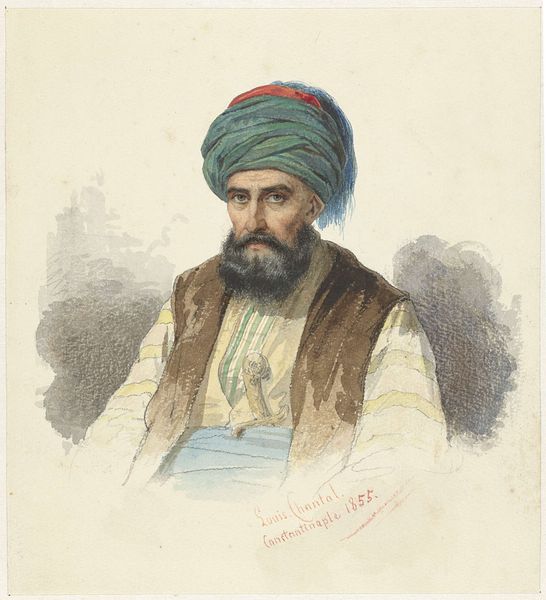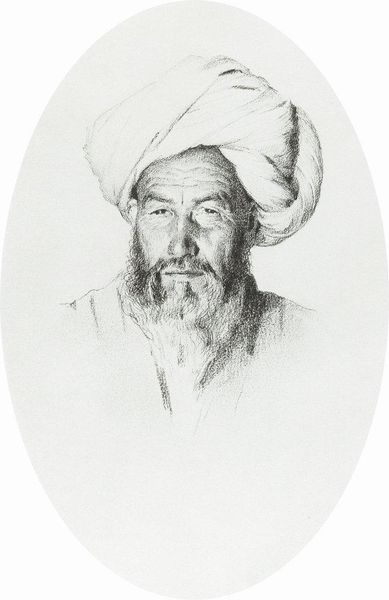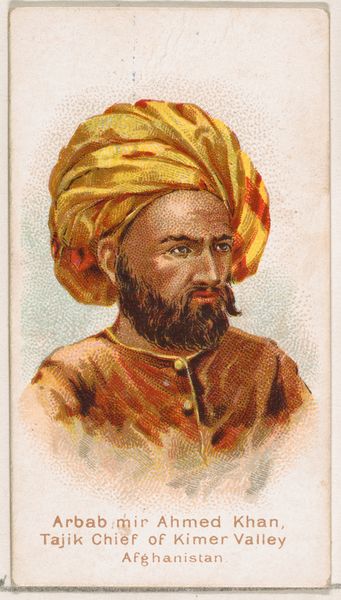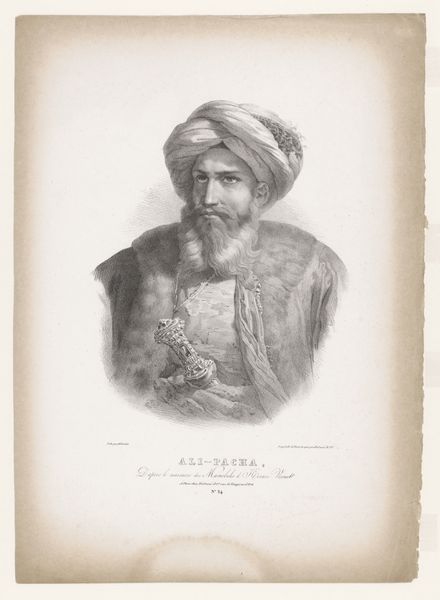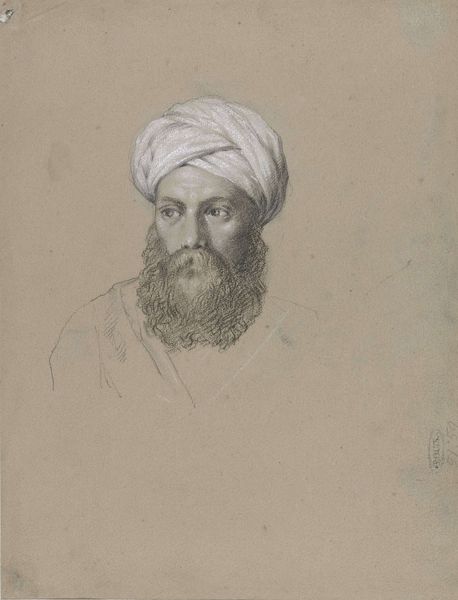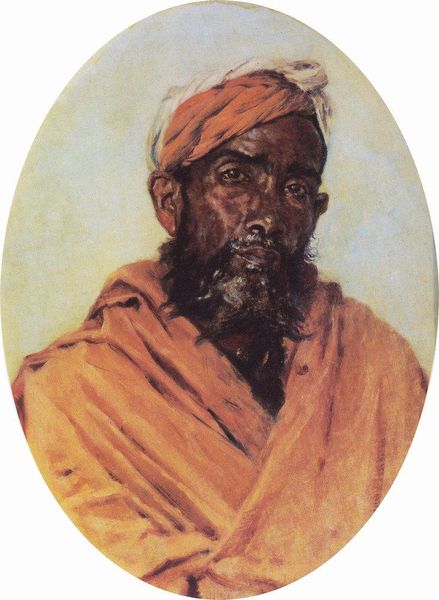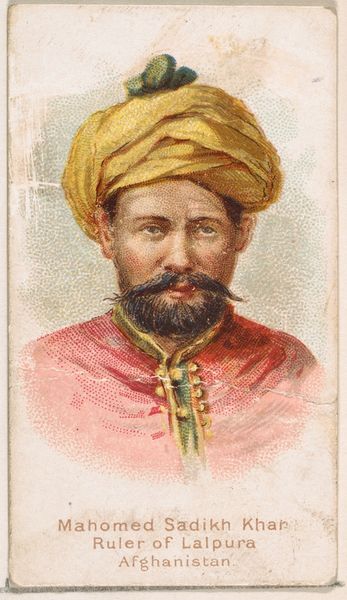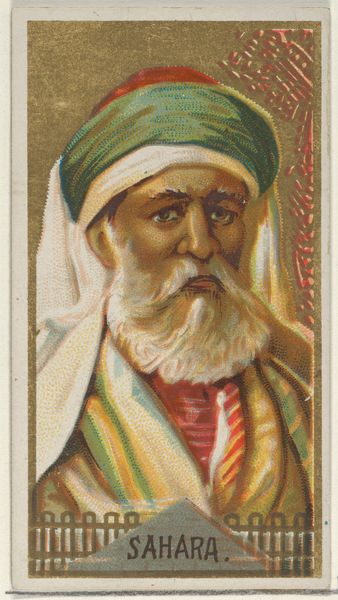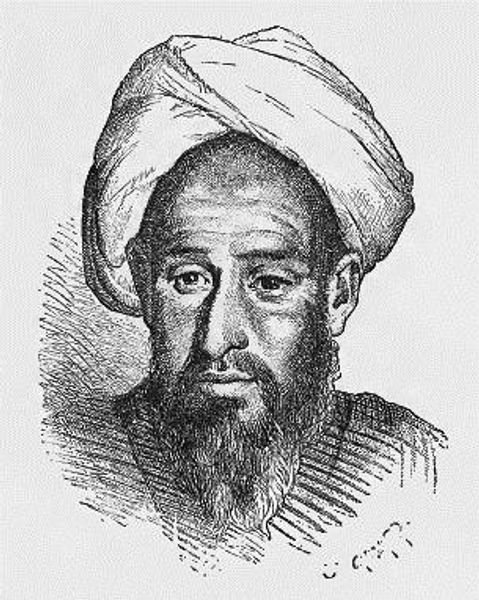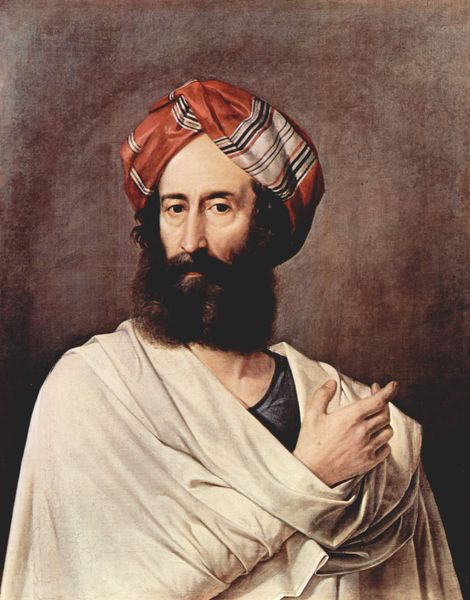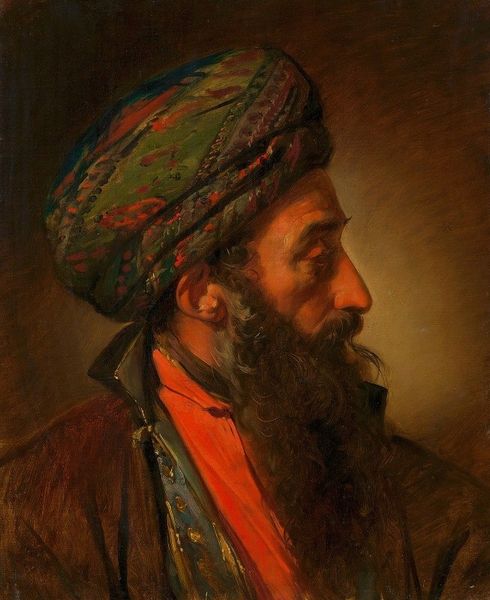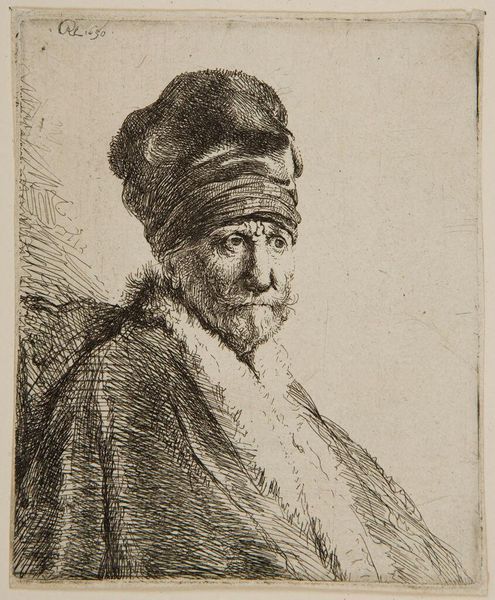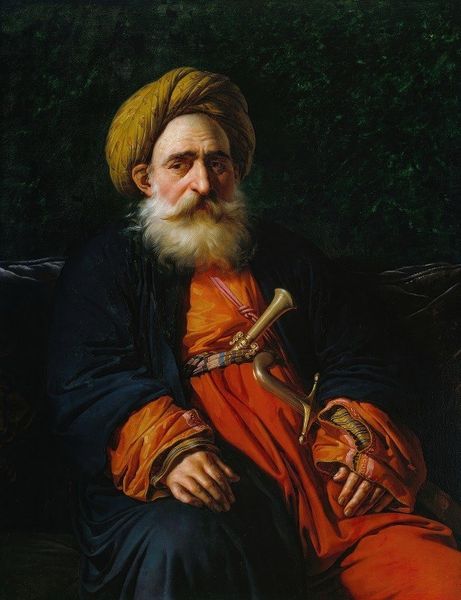
Dimensions: height 156 mm, width 130 mm
Copyright: Rijks Museum: Open Domain
Curator: Here we have "Man met tulband," or "Man with turban," rendered in 1866 by Louis Chantal. It resides here at the Rijksmuseum. What strikes you initially? Editor: Well, first, there’s that… *presence*. Those eyes are incredibly penetrating. There's a weariness there, too, but an underlying dignity that’s hard to ignore. I see layers of charcoal and watercolour giving real depth to this character study, what about you? Curator: Yes, it’s captivating. Given its context, one immediately considers the phenomenon of Orientalism that flourished in Western art during the 19th century. Chantal clearly portrays the subject with respect, even a sense of admiration. How much do you feel that cultural exchange between Europe and North Africa figures into this portrayal? Editor: I can’t help but consider how his craft informed his understanding. The materials themselves would have been commodities traded and exchanged – pencils from Germany, watercolors from across Europe perhaps, each pigment a small history. These aren't simply passive artistic tools. The weave of his turban might hint at its production context; the source of raw materials used? Was that turban constructed through colonial trading dynamics? The drawing as a form of documentation? Curator: Intriguing! You highlight the political undercurrent within what might initially seem a simple portrait. Editor: Exactly. And while we appreciate the detail of the face and the textures conjured, who were Chantal's consumers, and what were they truly "consuming"? What did this 'Orientalist' lens offer them, or obscure, in turn? Did those consumers consider the means or labour necessary to craft and deliver these paintings, sketches, and artistic devices? Curator: Fascinating! I confess, I usually interpret primarily its artistic qualities: Chantal’s handling of light and shadow, his ability to convey a palpable sense of human presence with subtle strokes of charcoal. This piece certainly urges to rethink the politics embedded in its consumption. It's less about surface aesthetics than what went into manufacturing both artwork, subject and desire around its reception. Editor: Precisely! Considering these overlooked layers gives the work so much more dimension. A worthy two minutes to reflect, perhaps.
Comments
No comments
Be the first to comment and join the conversation on the ultimate creative platform.
